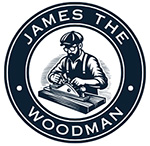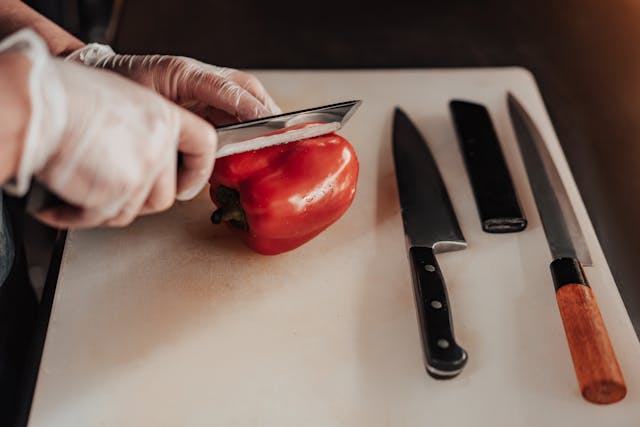Introduction to Cutting Board Materials
Cutting boards are an essential tool in every kitchen, playing a vital role in food preparation and hygiene. They come in various materials, each with distinct characteristics that influence durability, maintenance, knife friendliness, and food safety. Among the most popular options are wooden, plastic, bamboo, glass, and composite boards. Choosing the right cutting board involves understanding how each material performs under typical kitchen conditions. In this article, we compare wooden cutting boards to other types of boards to help you make an informed choice that suits your cooking habits, maintenance preferences, and budget.
Wooden Cutting Boards: A Timeless Choice
Wooden cutting boards have long been favored by professional chefs and home cooks alike. Made from hardwoods such as maple, walnut, cherry, or teak, they offer a durable and knife-friendly surface. One of the key advantages of wood is its ability to self-heal. Shallow cuts tend to close up over time, reducing the buildup of harmful bacteria. Additionally, the dense grain structure of hardwoods helps resist moisture absorption, especially when the board is properly maintained with regular oiling.
Wooden boards are available in edge grain, end grain, and face grain styles. End grain boards, often called butcher blocks, are particularly valued for their resilience and gentle impact on knife edges. These boards have fibers aligned vertically, allowing knife blades to slide between the fibers rather than slicing through them, which prolongs blade sharpness.
In terms of aesthetics, wood is unmatched. It brings a natural warmth and classic look to the kitchen. However, wooden boards are not dishwasher safe and require handwashing and occasional oil treatments to maintain their condition. They are also heavier and often more expensive than other types.
Plastic Cutting Boards: Lightweight and Practical
Plastic cutting boards, typically made from polyethylene or polypropylene, are popular due to their affordability, light weight, and ease of cleaning. They are available in a variety of colors, which is useful for color-coding to prevent cross-contamination between different food groups, such as raw meat, vegetables, and cooked foods.
One major advantage of plastic boards is that they are generally dishwasher safe, making them convenient for busy kitchens. However, plastic is more prone to deep knife scars, which can harbor bacteria if not thoroughly cleaned. Over time, repeated use can cause a plastic board to become heavily scarred, prompting the need for replacement.
While plastic is less expensive than wood, it lacks the visual appeal and environmental sustainability of natural materials. Some users also report that plastic boards can become slippery when wet, potentially increasing the risk of knife accidents.
Bamboo Cutting Boards: An Eco-Friendly Alternative
Bamboo cutting boards are marketed as a sustainable and eco-friendly choice, and for good reason. Bamboo grows quickly and requires fewer resources to cultivate than traditional hardwoods. Bamboo boards are hard, durable, and resistant to knife scarring, making them a practical alternative to wood.
However, bamboo’s hardness can be a double-edged sword. The dense fibers can dull knives faster than traditional wood boards. Additionally, while bamboo is less porous than some woods, it still requires regular oiling to prevent cracking and warping. Like wood, bamboo boards should not be cleaned in the dishwasher, as high heat and prolonged exposure to moisture can damage the material.
From an environmental standpoint, bamboo is an excellent choice. But users should consider how its density affects both maintenance and knife wear over time.
Glass Cutting Boards: Stylish but Problematic
Glass cutting boards are sleek, easy to clean, and often feature decorative designs. They are entirely non-porous, which means they won’t absorb liquids or retain odors. Because of this, glass boards are often perceived as hygienic. They are also dishwasher safe and resistant to staining.
Despite these benefits, glass cutting boards have significant downsides. Their hard, unforgiving surface is extremely harsh on knives, dulling blades rapidly and potentially causing chipping. Furthermore, the slick surface of glass can make cutting less stable, increasing the risk of slipping and injury. The noise produced when chopping on glass can also be unpleasant.
For these reasons, glass boards are often used more for presentation purposes than for actual food preparation. While they are attractive and easy to sanitize, their practicality in everyday cooking is limited.
Composite Cutting Boards: A Blend of Benefits
Composite cutting boards, made from resin-infused paper or wood fibers, are designed to offer the best of both wood and plastic. Brands like Epicurean or Richlite produce boards that are durable, dishwasher safe, and resistant to warping. They also offer a smooth surface that is relatively gentle on knives, though not as forgiving as end grain wood.
These boards are highly resistant to staining and are non-porous, making them hygienic and easy to clean. They do not require oiling and are often heat-resistant, which adds versatility. However, they can be expensive and may not provide the same tactile satisfaction or natural look as traditional wooden boards.
Composite boards appeal to those who want low maintenance without compromising too much on performance or safety. They’re especially useful in fast-paced kitchens where efficiency and hygiene are paramount.
Comparing Durability and Maintenance
In terms of longevity, wooden and composite boards tend to last the longest when properly maintained. Wooden boards, in particular, can last for decades with regular oiling and gentle cleaning. Bamboo boards, while durable, are more prone to cracking over time. Plastic boards wear out faster due to knife scarring, and glass boards, although physically durable, are less useful in practice due to their knife-dulling nature.
Maintenance is another key factor. Plastic and composite boards offer the easiest cleaning process, with dishwasher compatibility. Wood and bamboo require handwashing and oiling to maintain their integrity. Users who prefer minimal upkeep may lean toward plastic or composite, while those who enjoy traditional tools and aesthetics may be willing to put in the extra effort for wooden boards.
Food Safety Considerations
Food safety is paramount in any kitchen. Studies have shown that wooden boards can inhibit bacterial growth more effectively than plastic when properly maintained. Wood has natural antimicrobial properties and, as mentioned earlier, can allow knife scars to close over time. However, if neglected, wooden boards can become a haven for bacteria.
Plastic boards, while easy to clean, may become unsafe once heavily scarred. Regular replacement is essential to avoid contamination. Bamboo and composite boards offer solid food safety performance, provided they are cleaned correctly.
Glass boards are non-porous and easy to sanitize, but their slipperiness and impact on knife control can make food preparation riskier. Ultimately, all cutting boards require proper cleaning routines, regardless of material.
Conclusion: Which Cutting Board is Right for You?
Choosing between wooden cutting boards and other types depends on your kitchen habits, budget, and values. Wooden boards are ideal for those who appreciate aesthetics, care about knife preservation, and don’t mind regular maintenance. They are timeless tools that offer excellent performance and safety when maintained properly.
Plastic boards are practical, affordable, and low-maintenance but may need to be replaced more frequently. Bamboo boards provide an eco-conscious alternative but come with trade-offs in knife wear. Glass boards are better suited for presentation than preparation, while composite boards offer a balance of performance and convenience.
By understanding the pros and cons of each type, you can select the cutting board that best suits your culinary style, hygiene standards, and kitchen workflow.

